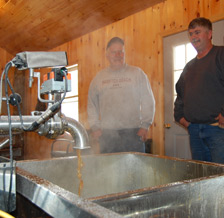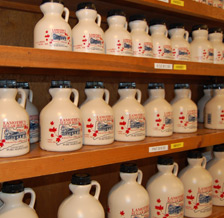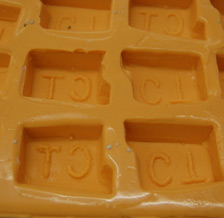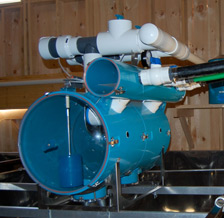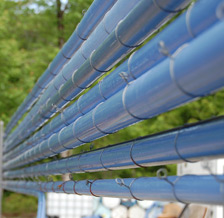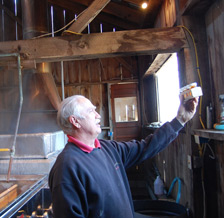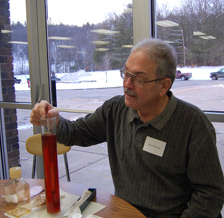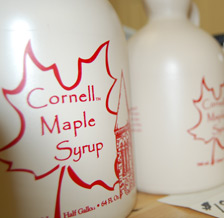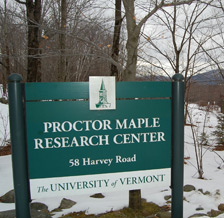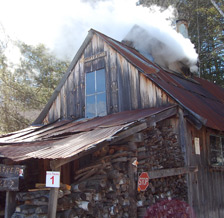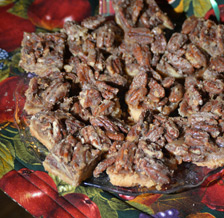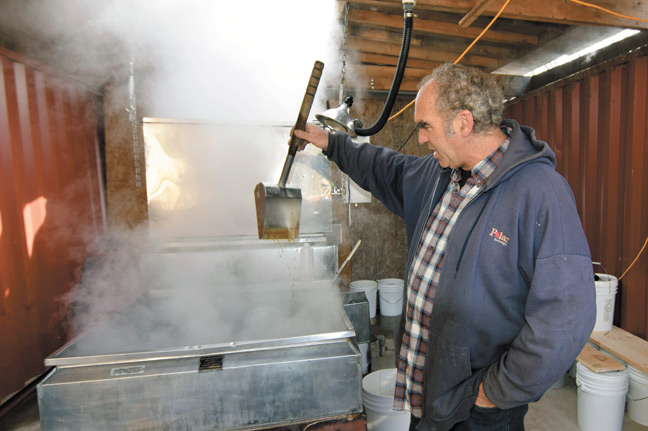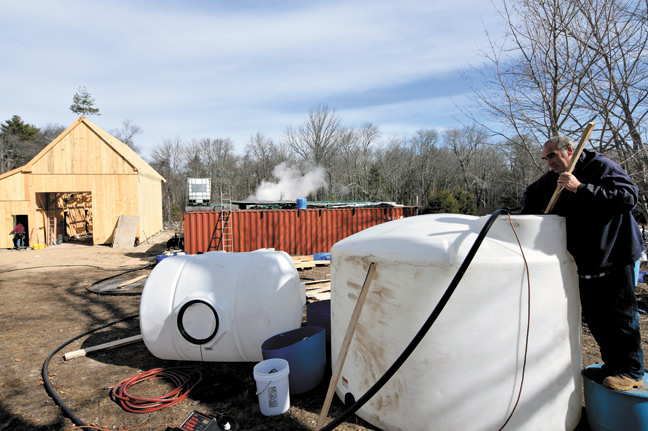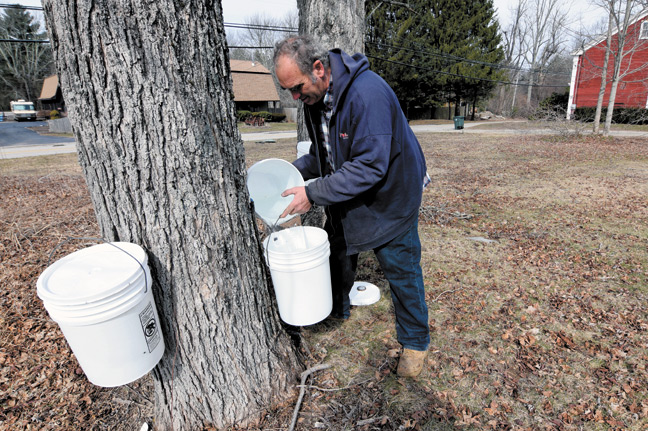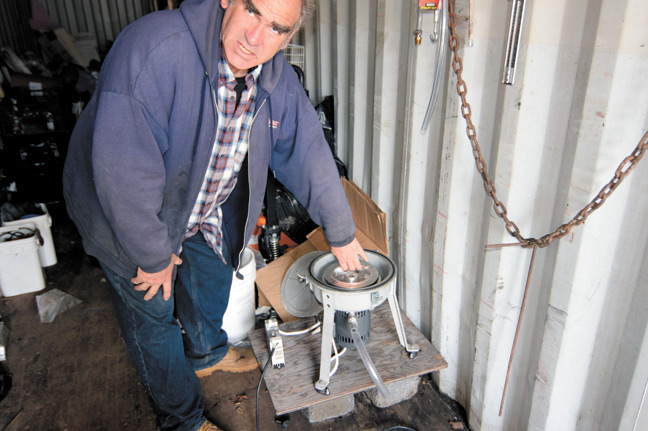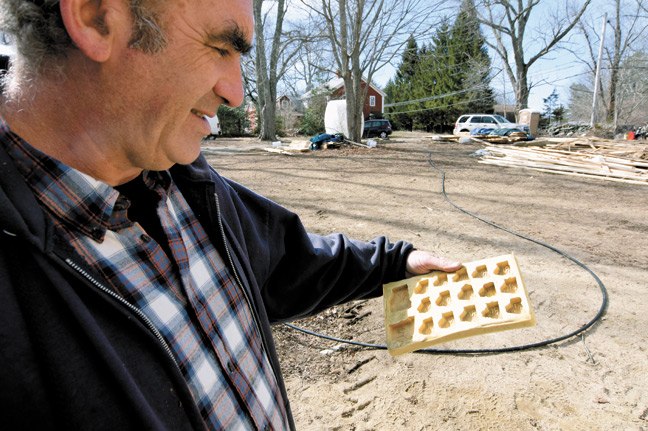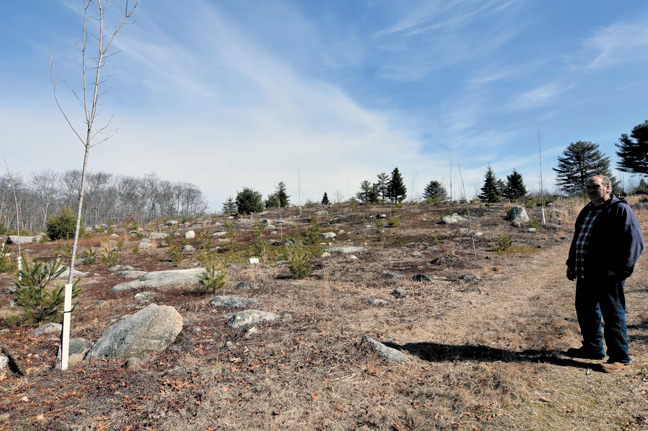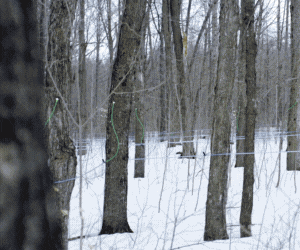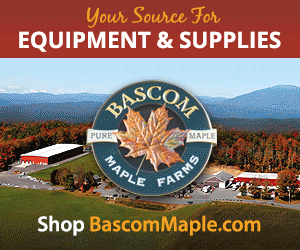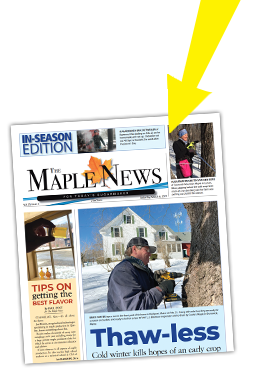Sugarmaker Profiles
Ocean State sugarmaker enjoys his niche
Grant hunter's sugarbush includes some 100 front yards with a maple tree
By PETER GREGG | NOVEMBER 2016
COVENTRY, R.I. — The sap was running at Charlie Chase’s farm on Feb. 28. And so was Charlie.
“Too busy to talk just yet,” Chase said, as he flew from the sugarhouse to the collection station and all around his 44 acre operation on the western edge of the smallest state.
Non-stop energy.
Chase has his little area of his little state pretty much cornered, hanging his distinctive 5-gallon white pails in front yards all over Coventry, R.I.
A professed people person, he has not been shy to go in any direction within 20 miles of his farm to just about every residence with a maple tree and ask to tap it.
“I go around and knock on doors and offer them half a pint to tap their maples,” he said. “If I get a quart per tap, I come out way ahead.”
Chase has about 100 front yards on his collection route. And a stockpile of 2,000 pails.
“This is my niche,” he said.
Chase has also found a niche in finding grants to pay for upgrades at his farm.
He has been awarded grants for his Steam-Away, grants to help pay for his new sugarhouse, grants to plant new maple trees. He’s even gotten grants to help pay for deer guards to protect his five-acre plantation of new maple trees.
“In all, I’ve probably gotten $35,000 in grants,” Chase said.
He is a natural sugarmaker in the fact that he is constantly tinkering and finding innovative ways to make his product.
During a tour for The Maple News, he showed us a centrifuge he picked up online that he claims will filter syrup.
The machine spins the syrup in a cylinder at 6,000 miles per hour, separating the liquid from the solids. The solids collect against the wall of the cylinder while the liquid drains out crystal clear. Or that’s the theory anyway.
“I’ve haven’t used it yet,” he said. “I’m missing a few parts.”
Chase also got innovative when he couldn’t find a maple candy mold in the shape of Rhode Island, like other maple producing states have. So he made his own.
Chase seemed to be proudest of the legacy he might leave behind.
While his 40-acre farm has few natural maples, he made a five-acre clearing and planted hundreds of new sugar maple trees.
“That’s how it used to be way back 200 years ago. Folks would plant maple trees in the front yard for the future generations to be able to make sugar,” Chase said.
“I planted all these trees for somebody else to benefit from.”
Originally published April 2016

